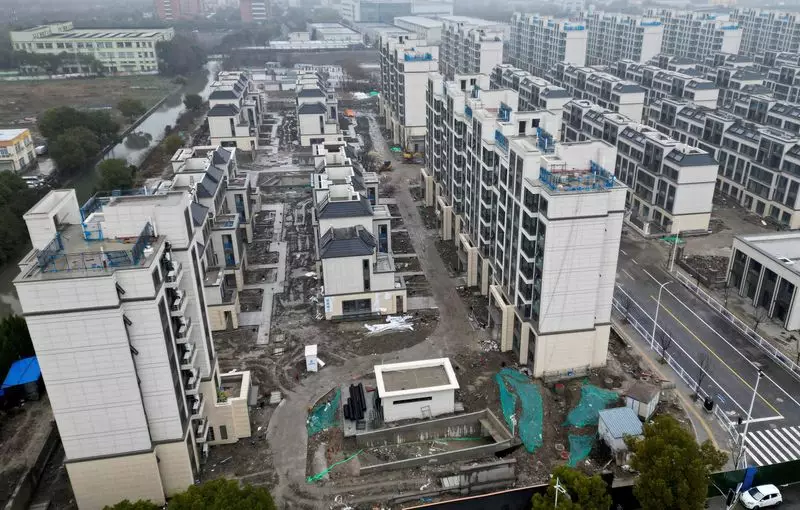In a recent shift aimed at rescuing its weakening property market, China’s central bank, the People’s Bank of China (PBOC), announced plans for a reduction in mortgage rates for existing home loans. This move is anticipated to lower rates by an average of 50 basis points (bps), a critical measure given the ongoing economic slowdown and its impact on the beleaguered housing sector. With the target date for implementation set before October 31, the directive mandates commercial banks to adjust their existing mortgage rates to at least 30 bps below the ongoing Loan Prime Rate (LPR), effectively stabilizing monthly payments for homeowners while aiming to rejuvenate the market.
The Chinese property market has faced severe challenges in recent years, exacerbated by economic contractions and declining consumer confidence. August’s reported figures indicated a significant drop in new home prices, marking the sharpest decline in over nine years. The cumulative property sales experienced a staggering decrease of 18% in just the first eight months of this year. These statistics outline an urgent need for broad-based intervention, as sales rankings across various regions plummeted, indicating an extensive market downturn.
To combat this crisis, the PBOC’s announcement arrives amid a series of previously deployed policies, which included changing down payment ratios and mortgage interest rates. Unfortunately, while these measures seemed promising in theory, they struggled to galvanize buyer interest or enhance liquidity in a hesitant market that suffered from adverse buyer sentiment.
In tandem with the PBOC’s mortgage rate cuts, local governments across China are beginning to ease restrictions on home purchases, underscoring a coordinated effort to tackle the real estate crisis. Notably, cities like Guangzhou have lifted purchase restrictions entirely, while major urban centers like Shanghai and Shenzhen are now permitting non-local buyers easier access to the housing market. They are also lowering the minimum down payment ratio for first-time homeowners to a more approachable 15%. These steps illustrate how local authorities are responding boldly to revive the stagnant property sector, aiming to attract potential buyers back into the fold.
However, one must consider the significant implications of these measures—especially regarding market sentiment moving forward. The removal of restrictions hints at a sense of desperation as cities scramble to retain consumers’ interest in homeownership amidst a rapidly changing economic landscape.
The Rationale Behind Mortgage Rate Reductions
The motivation for rate reductions is further articulated by the PBOC, which noted that the existing mortgage rate structure is not only outdated but has also led to substantial barriers for homeowners. This discrepancy has caused many to rush to pay off high-rate mortgages early, ultimately tightening disposable income and further reiterating the already conspicuous consumption challenges facing the economy. The central bank’s statement underscores the need for a recalibrated pricing mechanism that sustains not only market competition but also homeowners’ financial stability.
This approach underscores the delicate balancing act the PBOC is now managing—stimulating growth while addressing the challenging dynamics of supply and demand in real estate, which have shown signs of distress amid shifting economic horizons.
Ultimately, the PBOC’s decision to lower mortgage rates alongside the simultaneous efforts of local governments marks a pivotal moment for China’s economic narrative. While these interventions may provide temporary relief, the longer-term outcome remains contingent upon broader economic trends, consumer confidence, and a holistic recovery of the property sector. Stakeholders will be keenly watching these developments as China seeks not only to stabilize its housing market but also to navigate its broader economic trajectory during turbulent times. The unfolding situation is a clarion call for continuous reform and innovative strategies aimed at revitalizing an essential engine of economic growth—construction and housing.

